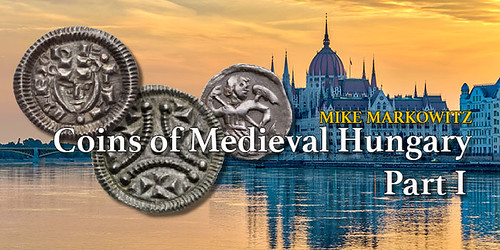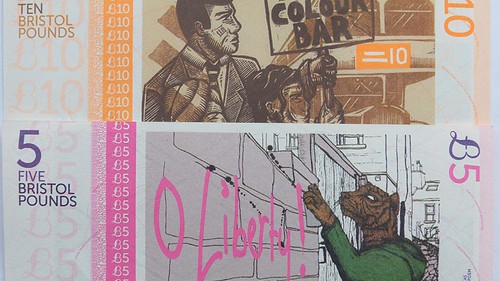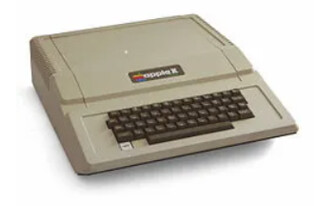
PREV ARTICLE
NEXT ARTICLE
FULL ISSUE
PREV FULL ISSUE
LOOSE CHANGE: MAY 3, 2020Here are some additional items in the media this week that may be of interest. -Editor Coins of Medieval Hungary: Part I
Mike Markowitz published on CoinWeek the first part of a series on the medieval royal coinage of Hungary. He told me, "I know many Hungarian Americans who collect, and the history is right out of "Game of Thrones" (without actual dragons)." -Editor  ABOUT THE YEAR 895, THE MAGYARS, a federation of nomadic tribes whose origin was in the distant forests of Siberia, crossed the Carpathian Mountains led by a chieftain named Árpád (c. 845-907), and occupied the wide, fertile Danubian basin. Known to the Romans as "Pannonia", this region had seen the rise and fall of the Huns, the Goths, the Avars, and others. Magyar warriors were horse archers, a skill that takes years of training and constant practice to master. They were valued as allies in the wars of the Franks and the Byzantines. During the 10th century they became fearsome raiders, looting and pillaging across much of Europe. They abandoned their predatory ways following a crushing defeat in 955 by the armored knights of the German emperor Otto "the Great" (ruled 936-973) at Lechfeld in Bavaria. Few medieval coins would win a numismatic beauty contest, but their stories give us insight into the brutal "game of thrones" that characterized this turbulent era. To read the complete article, see:
One Numismatist's Experience With Computers
Ron Guth's latest blog post is a walk down computer memory lane. -Editor
This blog entry is a trip down memory lane as I recall my experiences with computers over the years. To read the complete article, see:
Community Currencies
Dick Hanscom passed along this BBC News article on community currencies. Thanks. -Editor  What's a community currency? It's a special, local currency that can only be used within a certain locale at shops or other businesses that have signed up to accept it as an alternative to the official, national currency, with the goal of encouraging spending in the local economy. This can either encompass a whole town, or in the case of a currency like the Brixton Pound, just one London neighbourhood, and can be bought at a rate equivalent to the national British pound. There are thousands of community currencies in the world and the concept has been around for decades, and in the past couple of years, they're becoming more popular as more have become digital. Community currencies are seen by proponents as an innovative tool to help local trade flourish against the trend to globalisation. Other benefits can include providing a method for people without access to paid employment to earn 'money' through charitable or other community work, as well as providing a medium for a specific town or region to express its individual identity in a way national currencies do not. But community currencies have yet to really infiltrate the mainstream – sometimes stymied by a naïve attitude to running costs, or failure to provide digital forms that chime more with modern ways of spending. Now, however, various currencies are tackling these issues in different ways worldwide. To read the complete article, see:
Portraits of Franklin & Washington
The faces of George Washington and Benjamin Franklin are universally familiar in part because of their use on U.S. coins and currency. The Delancey Place blog published an excerpt this week from the book Franklin & Washington by Edward J. Larson. Here's an excerpt of the excerpt! -Editor
"Franklin's portrait expands beyond the bill's borders -- his expressive face looking fleshy and open. Clearly aged, Franklin nevertheless appears vibrant and alive. 'He ... possesses an activity of mind equal to a youth of 25,' a fellow delegate said of the eighty-one-year-old Franklin at the Constitutional Convention, two years after the picture was painted. "Washington, in contrast, glares out from a tight central oval on the one-dollar bill, his craggy, colorless visage looking like a plaster mask animated only by those intense eyes, which Stuart painted as bluer than they really were. Once told that his expression showed emotion, Washington shot back, 'You are wrong. My countenance never yet betrayed my feelings!' Stuart saw something in that face, however. 'All his features,' the painter commented, 'were indicative of the strongest and most ungovernable passions.' Yet Washington governed them with a granite, tight-lipped self-control that made him the stoic father figure for a nation that adopted Franklin as its favorite uncle. Together, they midwifed a republic. To read the complete article, see:
 Wayne Homren, Editor The Numismatic Bibliomania Society is a non-profit organization promoting numismatic literature. See our web site at coinbooks.org. To submit items for publication in The E-Sylum, write to the Editor at this address: whomren@gmail.com To subscribe go to: https://my.binhost.com/lists/listinfo/esylum All Rights Reserved. NBS Home Page Contact the NBS webmaster 
|

